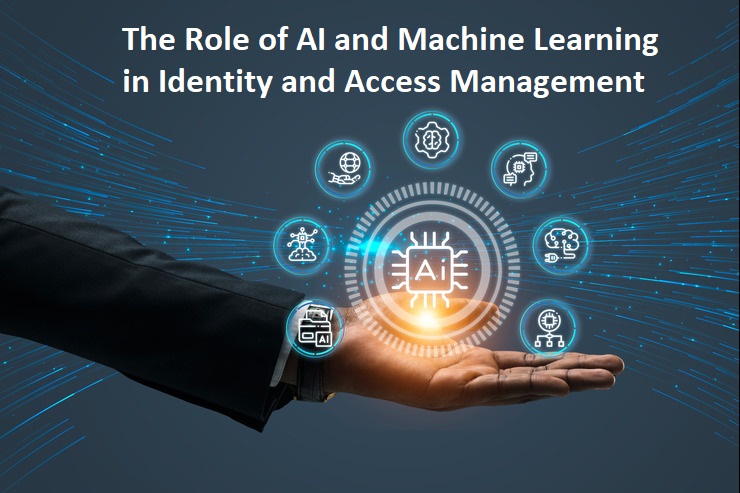
Kickstart Your IAM Journey Today, Get all your questions answered by our business development team.
Contact Us:
G2-1404, Neotown, Techzone-4, Greater Noida West, Uttar Pradesh, India

Kickstart Your IAM Journey Today, Get all your questions answered by our business development team.

Identity and Access Management (IAM) is a critical component of any organization’s security infrastructure, ensuring the right individuals have access to the right resources at the right time. With the rapid advancement of technology, artificial intelligence (AI) and machine learning (ML) are revolutionizing the field of IAM, enhancing its effectiveness and efficiency. This essay aims to explore the significant role that AI and ML play in IAM and the benefits they bring to organizations.
AI and ML algorithms can analyze massive amounts of data to detect patterns and anomalies, leading to improved authentication and authorization protocols. By learning from user behavior and identifying unusual activity, these technologies help companies prevent unauthorized access. Adaptive authentication, powered by artificial intelligence and machine learning, can continuously assess the risk of each login attempt, requiring additional verification for high-risk activities and simplifying the authentication process for user trust.
One of the biggest challenges of IAM is balancing security and user experience. Artificial intelligence and machine learning can solve this problem by implementing risk-based access control. These technologies can predict the likelihood that user actions are malicious or legitimate based on historical data and assign appropriate risk scores. By dynamically adjusting access permissions based on these insights, organizations can ensure that each user has the appropriate level of access. This minimizes the risk of unauthorized activity while still allowing legitimate users to carry out their tasks effectively.
AI and ML can automate the provisioning and deletion of user accounts, significantly reducing the burden on IT administrators and ensuring compliance. By analyzing user attributes, roles and historical data, these technologies can determine appropriate access rights for new employees or changes to existing roles. Additionally, when employees leave a company, artificial intelligence and machine learning can ease the deprovisioning process by immediately revoking access to various systems and applications.
Financial institutions and e-commerce platforms face a constant threat of fraud and cyberattacks.AI and ML technologies can analyze massive amounts of data in real-time and detect fraud patterns and unauthorized activity more accurately than traditional rules-based systems. By continuously monitoring user behavior and network traffic, these technologies can detect suspicious activity such as account takeover attempts and fraudulent transactions, allowing companies to act quickly and avoid financial losses.
Passwords are considered weak and easy to crack. Artificial intelligence and machine learning can reduce this risk by implementing advanced password management systems. These technologies can analyze user behavior patterns to identify weak passwords, provide recommendations on how to strengthen them, and allow users to easily reset their passwords themselves. Additionally, artificial intelligence and machine learning can enable the use of biometric data or other forms of multi-factor authentication, increasing the overall security of IAM systems.
AI and ML’s ability to analyze large amounts of data in real-time enables continuous monitoring of user activity and identification of unusual behavior. By establishing a baseline of typical user activity, these technologies can detect deviations from normal patterns, such as: B. Abuse by privileged users or attempted unauthorized detecting these anomalies early, companies can respond quickly and minimize the impact of security incidents.
The role of AI and ML in IAM cannot be understated. These technologies bring numerous benefits, including enhanced authentication and authorization, risk-based access control, automated provisioning and de-provisioning, fraud detection and prevention, improved password management, self-service capabilities, and continuous monitoring with anomaly detection. As organizations face increasingly sophisticated cyber threats, implementing AI and ML in IAM not only strengthens security but also allows for a more seamless user experience. By leveraging the power of these technologies, organizations can stay ahead in an ever-evolving digital landscape, safeguarding their critical assets and data.
We are a leading Identity and Access Management service provider who stayed ahead of the pack by providing the best IAM services to customers since day one. We have successfully delivered many IAM / IGA projects. We offer a seamless experience with integration across all cloud applications. Have questions? The consultation is always free.
Email contact@dvrtta.com
Reach out today to receive more information about our IAM services, if you have question reach us.